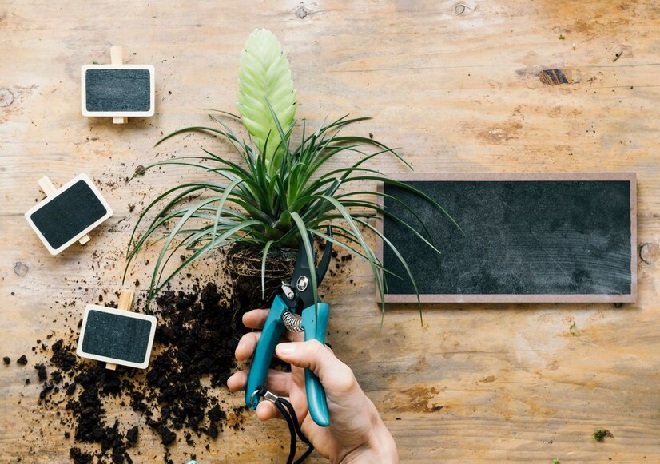
Growing lush, healthy plants requires more than just good soil and water. If you want your green friends to thrive, you’ll need to master the art of maintaining ideal growing conditions. Whether you’re a seasoned gardener or a newbie, this guide will provide you with the essential tips and tricks to create an optimal environment for your plants.
The Importance of Light
Light is essential for plant growth, enabling photosynthesis. While natural sunlight is ideal, different plants have varying light needs. If sunlight is insufficient, artificial grow lights like LEDs and fluorescents can supplement, providing the required light spectrum. Adjusting light exposure is key to maintaining plant health.
Proper Watering Techniques
Proper watering is crucial for plant health. Overwatering or underwatering can cause root rot and other issues, so balance is key. Different plants have unique needs; some like moist soil, others prefer it dry. Check soil moisture by inserting your finger an inch deep; water if it’s dry. Water deeply at the plant’s base, not the leaves, to promote strong roots and prevent fungal diseases.
Optimal Temperature and Humidity
Temperature and humidity are crucial for plant growth. Ideal temperatures range from 60-75°F (15-24°C), with extreme temperatures causing stress. Humidity should be kept around 40-60%; too high leads to fungal diseases, too low causes drying. Indoors, use a humidifier, group plants, or mist leaves to maintain proper humidity.
Soil Quality and Fertilization
Healthy soil is vital for plan-t growth, providing essential nutrients, water, and support. To maintain ideal soil, ensure a balance of nutrients and good drainage. Use high-quality potting mixes and enrich with organic matter like compost. Fertilize appropriately, choosing balanced fertilizers with equal N-P-K ratios and following package instructions to avoid over-fertilizing.
Air Circulation and Ventilation
Good air circulation is key to preventing pests and diseases by avoiding stagnant air, which can cause mold and mildew. Use fans indoors and ensure gentle airflow to protect plan-ts. In greenhouses, open vents or windows for fresh air.
Pest and Disease Management
To keep plan-ts healthy, regularly monitor for pests and diseases. Look for signs like yellowing leaves or sticky residue, and act quickly to remove pests such as aphids or spider mites. Address diseases like powdery mildew by removing affected parts and using fungicides. Good hygiene with tools and pots also helps prevent issues.
The Role of Regular Pruning
Pruning is essential for plant health and growth. It removes dead or damaged parts, improving air circulation and reducing disease risk. It also shapes the plan-t for a fuller appearance. Use clean, sharp shears and avoid cutting too close to the main stem.
Seasonal Care and Adaptation
Understanding the seasonal needs of plan-ts is crucial for optimal care. During the growing season, increase watering and nutrients, protecting them from extreme conditions. In the dormant season, reduce watering and fertilization, allowing the soil to dry slightly and avoid pruning or repotting to let the plants rest.
The Benefits of Mulching
Mulching is an effective technique for maintaining ideal growing conditions by retaining soil moisture, suppressing weeds, and regulating soil temperature. Applying organic mulch like wood chips or straw around plan-ts conserves moisture, reduces watering frequency, and improves soil fertility as it decomposes.
Container Gardening Tips
Container gardening is ideal for limited spaces but has unique challenges. Ensure success by selecting the right container size, ensuring proper drainage, using quality potting mix, maintaining moisture levels, and using slow-release fertilizer.
Creating a Thriving Indoor Garden
Indoor gardening lets you enjoy plants year-round, regardless of the weather. Choose indoor-friendly plants like pothos and snake plan-ts for low-light areas. Ensure they get enough light with windows or grow lights. Keep temperature and humidity stable by avoiding drafts and using a humidifier.
The Power of Companionship Plan-ting
Companion planting involves growing different plants together to boost growth and deter pests. For instance, marigolds can repel pests from vegetables, and basil can enhance tomato flavor while keeping pests away. Experimenting with combinations can lead to a more productive garden.
The Joy of Harvesting
Gardening’s most rewarding aspect is harvesting. For vegetables, pick at peak ripeness using clean tools for best flavor. Trim herbs regularly to promote growth, and harvest flowers in full bloom for visual impact. Enjoy the satisfaction of growing your own plan-ts with care.
Conclusion
Growing plants successfully is a mix of art and science. By meeting your plan-ts’ specific needs, you can cultivate a thriving garden. Stay observant to their signals, and with patience and dedication, you’ll become an expert gardener. For more tips and advice, consider reaching out to the best solar companies in Boise. They offer insights on sustainable gardening practices and can help you create an eco-friendly garden.








